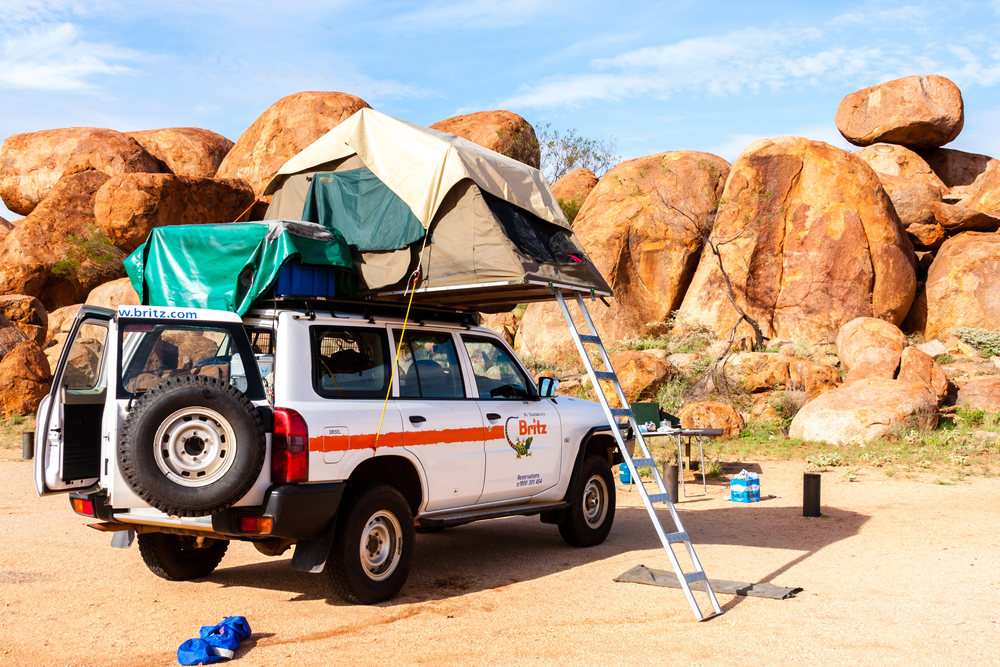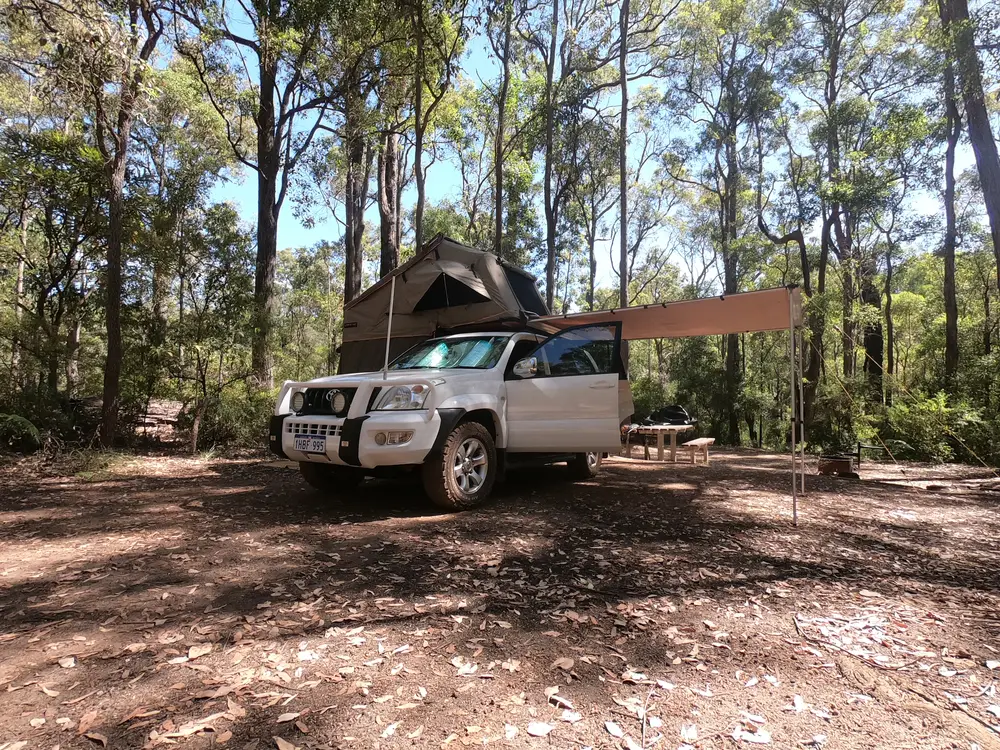What is the best way to camp for a week in the Australian bush?
That question has been debated by many locals. Some people prefer tents, while others like swags. The debate has always been heated within 4×4 groups on Facebook and ultimately, both approaches have their pros and cons.

In this article, we will explore the differences between these two camping methods for Australian offroad enthusiasts and see which one might be better for you!
Comfort
Roof top tents: Tents offer a lot of space and can be set up just about anywhere where there are no low tree branches. With that space, you can get changed while almost standing up straight while mattresses range between 1-inch and 6-inches think for a great night’s sleep.
Swags: Swags provide some comfort, but no where near the comfort of a roof top tent. You’re directly on the ground where the cold winter air lays and getting changed can be tricky. Mattresses are typically thinner too.
Winner: Roof top tent
Weight/Ease Of Setup
Roof top tents: 4×4 owners do have to worry about weight because their tent rides on the roof of their car, thereby increasing the centre of gravity and making high-speed cornering a little hazardous. Setup times vary from 60 seconds to 7 minutes.
Swags: Swags are lighter and you can even pack them lower in your 4×4, however they aren’t ideal for hiking or even adventure motorcycling. Fortunately, they’re far easier to setup as you simply unroll them and often just require one or two poles which is all done at ground level.
Winner: Swags
Weather/Safety
Roof top tents : I really do feel safer in a roof top tent when a storm rolls along. Sure – you’re higher which brings a heightened risk of electrocution, but you’re also away from flash flooding risks and the mattress probably isn’t going to get soaked.
Swags: Swag camping typically aren’t going to give you much confidence during bad weather because swags do not offer much protection against wind or rain. That is – unless you’re in the tray of a ute or using a camping stretcher to elevate your swag. You’re also down there with many of the ‘dangerous’ aussie animals such as snakes, dingoes and spiders.
Winner: Roof top tents
Cost
Roof top tents: It’s no surprise that roof top tents cost 3 to 7 times more than a swag does. This is due to the extra materials including a thicker mattress, the ripstop canvas, internal poles and additional load-bearing plate that needs to be fitted. If you have a hardshell, then it’s likely that you’ll weight even more!
Swags: Swags are pretty affordable and if you’re a single person, this is often the best choice. This isn’t just due to the reduce materials needed, but less costs in shipping from the factory.
Winner: Swags
Storage Options
Roof top tents: If you go for a roof top tent then it’s going to be very easy to find a place for your things such as thongs, keys, phone and wallet.
Swags: If you go for swag then it’s going to be much harder to store bulkier items and unlike a roof top tent, you can’t leave your pillow and blanket setup between packing down and setting up again.
Winner: Roof top tents
Airflow
Roof top tents: Rooftop tent campers do not have to worry about airflow but swag campers will. Roof top camping offers great airflow because you’re often 2m up in the air to catch those afternoon breezes!
Swags: Unless you’re camping in winter then you may find it hot and even stuffy inside of your swag since they often have limited ventilation! Their smaller size means that you’ll be more insulated too.
Winner: Roof top tents for summer, swags for winter.
Safety
Roof top tents: Tents offer the best individual safety in my experience because they are sturdy and high off of the ground. You’re away from the wildlife and can clearly see if anyone’s entering your campsite.
Swags: This is the biggest downfall as you’re in a vulnerable position in a swag. This isn’t a problem in group camping situations, but when you’re out there on your own…you do feel a sense of anxiety when you hear those odd sounds at 3am.
Winner: Roof top tents
Longevity
Roof top tents: As long as you take care of your roof tent then you can expect a decade of use. It’s important to regularly clean off the fabric and store the metal poles where they can’t rust out. Your biggest (and often unavoidable) risk is UV damage.
Swags: They are also made to be long lasting but they don’t have much protection against water or wind. You’re more susceptible to mould and abrasion from camping on hard ground. Ensure you air out your swag after each camping trip to avoid these issues.
Winner: Tie
Practicality
Roof top tents: I do find rooftop tent camping is very practical because your pillow and blanket stays within the unit. No to dig around in a pack! Being high off the ground, it’s going to be difficult for animals or people to get inside your stuff while making changing or escaping a rain storm so much easier.
Swags: They are easy to set up but I do find it hard to find a safe spot for them. I always have to consider the slope of the ground and if there are any ants around. On the plus side, you can store them in the tray or boot of your vehicle avoiding the rushing sound of a tent on a roof rack while on the highway.
Winner: Roof top tents
In Summary
Ultimately, neither is actually better. What’s most important is how often you’ll use your preferred type of sleeping quarters and how often you’ll be away in the bush.
Weekend warrior? Go for a swag. Longer adventures? Go for the roof top tent.

